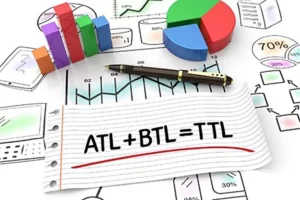It is enough to listen to the words of someone who is in the first stages of creating a new business . You can usually see and hear extreme optimism about all kinds of markets in the talk of these types of people.
It doesn’t matter what product or service these people produce. These types of people usually look at the audience with an oppressed and innocent look and say: I don’t want much. It is enough if two percent of the entire market belongs to me.
Usually, the tone of expression is so calm and humble that we don’t think for a moment what is the meaning of this market? And in this market that we still don’t know what it is, is two percent market share a reasonable and achievable expectation?
Classification of types of markets
The market is defined and classified in different ways depending on the need. When we talk about the market, it is important to know exactly which type of market we are talking about because there are at least four types of market that we can
1- Potential Market
The potential market includes all those who are interested in having our goods or using our services.
The potential market for Benz cars in Iran is maybe 120% or 130% of those who have a driver’s license (including those who don’t have a license but are thinking about a Benz car).
The media market such as Sed and Sima is perhaps less than half of Iran’s population. The existence of this potential market does not mean that all of them watch TV or listen to the radio. Rather, it means that if there is an opportunity and it is a useful program, they may use radio programs.
If you were given an invitation to attend and open an insect restaurant with a free meal, would you use this service?
Therefore, the types of potential market can be defined as follows:
People or businesses that may one day be our customers. Or at least the use of our products does not have a serious conflict with their principles, values, needs, preferences, and interests.
2- Ready market or Available Market
A ready market is a subset of potential market types. This subcategory includes those who have the time and other resources necessary to buy and use the desired products and services.
Now it doesn’t matter how many people like to have a Benz or how many people are not against having a Benz car.
The question is, how many people, if they want, can buy this car?
Consider this conversation:
Are you interested in theater?
I am interested and if the opportunity arises, I will definitely go to see the theater.
How many times have you been to the theater in the last year?
I have not gone. Because the opportunity did not come.
How many shows do you think you will see in the next year?
I don’t think there will be a chance.
As you can see, when we talk about the ready market, we are referring to all resources, not just money.
Many products are available in special stores. People like to have them too. By the way, they also have money. But the location of the stores is such that they don’t have a chance to visit them.
While your potential market is fixed and unchanged, any of the following actions may change your ready market:
- Moving the physical location of a store
- Establishing a site and producing a mobile application
- Changing the terms of payment for product purchases from cash to installments
- Product price change
Of course, keep in mind that you can add dozens more to the above list.
3- Target market
Target Market is a part of the types of markets that we have chosen to offer our products and services. The target market is usually, but not always, a subset of the target market.
You may have produced a toy and your ready market is ten thousand families. But you see that you don’t have enough budget for advertising and information and you decide to limit your target market to families in one area of town, or parents of children in a school, or families in the audience of a local publication.
You may even have enough financial resources at your disposal, but prefer to choose a smaller target market so that larger competitors are less sensitive to you.
The discussion of choosing the target market and related decisions is related to the marketing strategy and is included in the set of marketing management tasks.
4- Penetrated market
The market under the influence is a part of the types of markets that have procured and used our goods and services, or in other words, our products. In fact, the market is influenced by those who are currently our customers.
If the market penetration for a particular product is high, it means that that brand is popular in the market. The penetrated market size for a product provides an estimate of the scope of sales growth in the unpenetrated market and the size of the target market. If the size of your penetration market is small, it means that more investment should be made in the marketing strategy of that particular product.
A high penetration rate in the market shows that the product is already an established product and the leading brand or company in that category has become an influential business in its field. Attempting to capture unpenetrated markets is important to increase sales and market share , but at the same time retaining customers in the penetrated market is also of great importance. Careful attention should be paid to these customers so that they do not switch to competitors’ products.
Market penetration is calculated as a percentage of company sales to total product sales. For example, there are 400 million mobile phone users in India and Company A’s mobile phones are used by 80 million people. So the market penetration rate for company A is equal to 20%. This means that there are still 320 million mobile users in India who can be targeted by the company.
In the end, I would be happy if you can think of other reasons why a business may decide that its target market is smaller than the available ready market, share with us.













